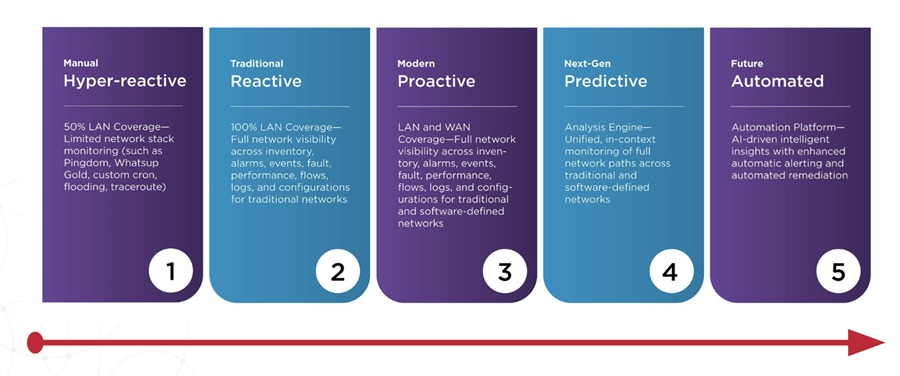Gartner highlighted 6 trends that infrastructure and operations (I&O) leaders must start preparing for in the next 12-18 months.
"I&O leaders need to drive change, not simply absorb it," said Jeffrey Hewitt, Research VP at Gartner. "They are expected to deliver more adaptable and resilient service from anywhere — and for an increasingly distributed workforce. This is pressuring I&O to take actions that will tie their decisions more closely to business requirements, a theme that runs through this year's trends."
Here are the top trends impacting I&O in 2022:
Trend 1: Just-In-Time Infrastructure
The speed at which infrastructure can be deployed is becoming just as important as putting the right infrastructure in the right place — colocation, data center, at the edge and more. This is the idea behind just-in-time infrastructure.
Borrowed from the term "just-in-time manufacturing," this trend aims to reduce infrastructure deployment times as well as fuel enterprise responsiveness to business needs and anywhere operations. Gartner expects it to be a differentiating factor when enterprises compare and negotiate with service providers moving forward.
Trend 2: Digital Natives
Digital-native companies are those that made public cloud and other digital capabilities part of their business model from the start, such as ride sharing applications or digital food delivery services. They combine different revenue approaches to monetize digital assets to gain new customers and boost market share and have only become more commonplace since the onset of the pandemic.
"There is an opportunity for traditional I&O organizations to leverage their digital-native counterparts that thrived during the pandemic to also produce highly agile, innovative and competitive offerings themselves, or join those that can," said Hewitt. "I&O leaders are faced with a "join or compete" dilemma."
By 2025, 70% of I&O leaders who ignore innovation will be marginalized to legacy system support only.
Trend 3: Management Confluence
This trend reflects the need for the growing number of management and monitoring tools — from IT service management (ITSM) to artificial intelligence operations (AIOps) and more — to be brought together in a single, comprehensive tool. Such integration is indispensable in the adoption of composable technologies, one of the three domains of business composability, which allows components of systems and data to combine more quickly and easily.
According to the 2022 Gartner CIO and Technology Executive Survey, 58% of high-composability enterprises build out integration capabilities for data, analytics and applications. These organizations reported better business performance compared with peers or competitors in the past year.
"I&O leaders can extend composability throughout the entire technology stack by inventorying their current management tool usage and identifying those that can be combined to form a more valuable, all-inclusive portfolio that improves I&O agility and drives optimal business results," said Hewitt.
Trend 4: Data Proliferation
Data will continue to multiply in variety, velocity and volume. As businesses continue to expand their data collection and holding efforts, I&O will be instrumental in guiding the policies surrounding processing, retention and legal requirements of the enterprise's data.
"I&O workforces need to work closely with their chief data officer to expand data literacy and effectively support data management across the enterprise," said Hewitt.
Trend 5: Business Acumen
I&O leaders are guiding their functions through a rapidly changing and distributed technology environment, which is threatened by the IT talent gap and requires new skills. According to a recent Gartner survey, 64% of I&O leaders point to insufficient skills and resources as one of their greatest challenges this past year.
"Technical skills' shelf life is shortening," said Hewitt. "As the I&O function is asked to provide more business justification for what they do, organizations are looking for I&O new hires to have business backgrounds rather than strictly technical degrees."
Gartner expects that by 2025, CIOs will fill 65% of open I&O leader positions with people that have no I&O experience.
Trend 6: Career Ladders to Career Lattices
Similar to the business acumen trend, I&O is moving away from single domain career paths driven by workloads and legacy technical skills. In fact, 29% of the skills in an average I&O job posting in 2018 will not be needed by 2022, according to Gartner Talent Neuron data.
Instead, I&O teams are moving laterally across a competency-based lattice that takes into account softer skills and emphasizes both learning agility and cross-domain expertise.
"While this certainly requires a mindset adjustment for some of the more tenured I&O workers, there will be much more opportunity within I&O teams as they move away from territorial thinking and toward fostering a collaborative environment," said Hewitt.


